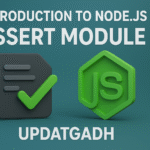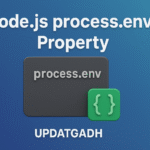
Data Model: Schema and Instance
Data Model
Data is a strategic asset in the digital era, not merely information. For any organization aiming to make effective, data-driven decisions, having valid and reliable data is essential. At the heart of managing such data is the design of a sound database. This involves not only planning how the data will be organized but also understanding how that data evolves over time.
Machine Learning Tutorial:-Click Here
Data Science Tutorial:-Click Here
Complete Advance AI topics:- CLICK HERE
DBMS Tutorial:-CLICK HERE
What is a Schema?
A schema is the blueprint of a database. Think of it as the architecture of a building—while people may come and go, the structure remains largely unchanged. A schema defines the structure, including tables, columns, data types, constraints, relationships, and other elements like views, stored procedures, and keys (primary and foreign).
A logical picture of the complete database is provided by the schema. It provides a structured framework that the data must adhere to, but it does not display the actual data. This model is usually made by database designers to help application developers understand how their programs will communicate with the database. This schema design method is a component of the data modelling process.
Though schema diagrams visually represent database objects and their relationships, they often don’t capture every detail. For example, specific data types and constraints may not be shown in a schema diagram.
Understanding Instance
While the schema defines the structure, the instance is the actual content of the database at a given point in time. As the data changes—when new students are added, grades are updated, or sections are modified—the instance of the database also changes. This dynamic nature of the instance contrasts with the static nature of the schema.
In technical terms, each operation that adds, deletes, or modifies data results in a new database state or instance.
Subschema: A Tailored View
A subschema is a tailored section of the main schema that pertains to a particular user group or application. It inherits all the properties of the parent schema but only displays a relevant subset. This is particularly useful when different applications or departments need to work with different parts of the same database.
Let’s consider a simple educational example:
Schema: Student
- Name
- Student_number
- Class
- Major
Schema: Section
- Section_identifier
- Course_number
- Semester
- Year
- Instructor
Subschema: Student_Section
- Name
- Class
- Section_identifier
- Course_number
- Semester
- Year
This subschema combines selected fields from both the Student and Section tables to provide a view tailored for managing course enrollments.
Example of an Instance (Database State)
Here’s what an actual instance of the Student_Section subschema might look like:
| Name | Class | Section_identifier | Course_number | Semester | Year |
|---|---|---|---|---|---|
| Anjali | BCA | A | C101 | 2nd | 2024 |
| Babbal | BCA | A | C101 | 2nd | 2024 |
| Gagan | BCA | B | C101 | 2nd | 2024 |
| Harjot | BCA | B | C101 | 2nd | 2024 |
| Rahul | MCA | A | M101 | 1st | 2024 |
| Veena | MCA | A | M101 | 1st | 2024 |
This table represents a snapshot of the database at a specific point in time. Every update or modification leads to a new instance.
Complete Python Course with Advance topics:-Click Here
SQL Tutorial :-Click Here
Download New Real Time Projects :-Click here
Final Thoughts
Understanding the distinction between schema and instance is crucial in database design. While the schema provides a long-term, stable structure for data storage, the instance reflects the ever-changing state of the data itself. Together, they form the foundation of any robust data management system, enabling applications to retrieve and manipulate information effectively.
Stay tuned with Updategadh for more insights into database systems and modern data architecture.
data model in dbms
data model example
types of data model
types of data models in dbms
data models in dbms pdf
hierarchical data models in dbms
data models in dbms class 10
types of data models with examples
data model
relational data model
conceptual data model
logical data model
hierarchical data model
network data model
physical data model
data modeling










Post Comment